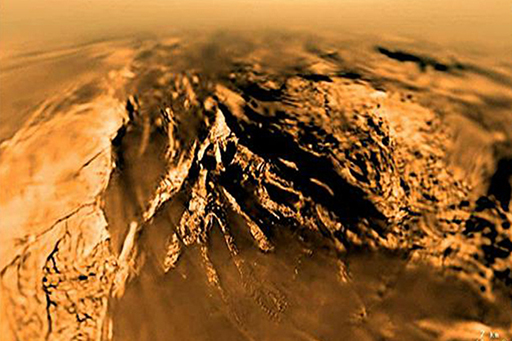2.10 Titan
Titan has a dense atmosphere. But what makes it even more interesting is the chemistry of this atmosphere, which contains many of the key compounds believed to have been important in the early history of the Earth’s atmosphere. The most abundant species making up 97% of the atmosphere is nitrogen, 1.4% is methane and about 0.1% hydrogen. There are also traces of carbon monoxide.

Approaching the surface, the Huygens probe found that only 0.01% of the sunlight measured on top of the atmosphere reaches the surface. This thick atmosphere has rain – not of liquid water but of methane. The surface looks much like Mars, but it is liquid methane that carves the river channels. Is this a place similar to the early Earth? It may be that the landscapes are similar – but methane is not water. Therefore potential life forms on Titan would have to be very different from anything we are familiar with on Earth, if they wanted to use rivers of methane in the same way terrestrial life forms use the rivers of water on Earth. Future missions will be able to build on the Huygens lander data and find out more about this familiar-looking yet very different world.
In this article, The Open University’s Professor Andrew Norton considers the range of habitable conditions that could exist on moons in other solar systems.
See also: Habitable exomoons? An article by the Open University’s Professor Andrew Norton musing about the habitability of moons of explanets (planets of other stars).
